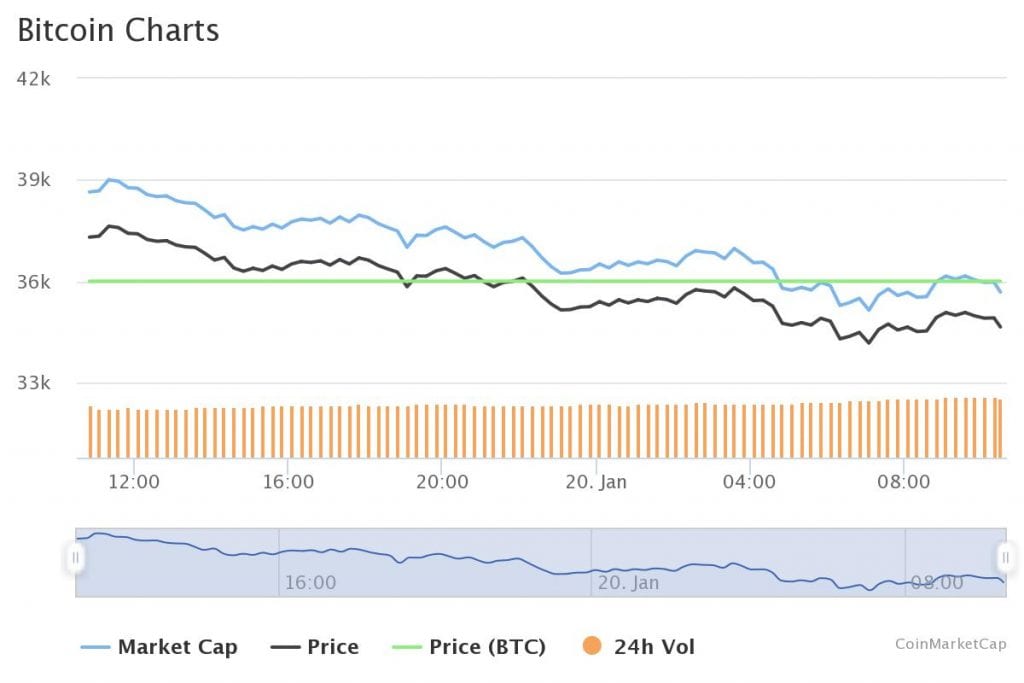The price of Bitcoin took a hit overnight, falling from $37,800 to $35,000 and consequently liquidating $572 million worth of cryptocurrency future positions. The pullback continued on Wednesday, as BTC plummeted to as low as $34,000 before gaining some of the losses back.

Analysts point to three main factors why the price of Bitcoin has declined steeply in the past 12 hours. The first being an overheated derivatives market.
Even before Bitcoin’s sudden pullback, the futures funding rate was hovering at around 0.1%. That’s 10 times higher than the average 0.01%.
The futures funding rate is a mechanism that achieves balance in the futures market. By incentivizing long or short contract holders based on market sentiment.
If there are more long contracts or buyers in the market, the funding rate turns positive. In this scenario, buyers have to compensate short-sellers with a portion of their contracts every eight hours.
Virtually all major cryptocurrencies saw their funding rates spike to around 0.1% to 0.3%, meaning the market was extremely overcrowded. When this happens, the likelihood of a long squeeze increases, which could cause many futures contracts to get liquidated in a short period.
Another reason why the price of Bitcoin dropped overnight is growing doubt in the market. Some traders are convinced the leading cryptocurrency will never reach $40,000 again.
U.S. Treasury Secretary nominee Janet Yellen suggested earlier this week that lawmakers “curtail” the use of cryptocurrencies amid terrorism concerns. “I think many [cryptocurrencies] are used, at least in transactions sense, mainly for illicit financing and I think we really need to examine ways in which we can curtail their use and make sure that anti-money laundering doesn’t occur through those channels,” Yellen said Tuesday.
Bitcoin Struggles to Breakout
Also not helping matters is Bitcoin’s consistent struggles of breaking out of the $38,000 resistance. However, an encouraging sign is that fundamentals of the Bitcoin blockchain network, such as address activity and trade volume, remain strong.
Finally, the lack of upside volatility has hurt the price of Bitcoin in recent weeks. BTC has been seeing weak reactions from buyers throughout the past several days compared to the initial rally to $42,000 in early January.
When Bitcoin dipped to key support levels, there was often a big reaction from buyers. Unfortunately, buyers are no longer reacting as strongly when BTC falls to such areas.
This indicates that the expectations of a rally toward the $40,000 to $42,000 resistance area have subsided, at least in the near term.
The combination of limited upside volatility and the lack of upside momentum is causing traders to act more cautiously. This likely means that BTC sees a prolonged consolidation phase until February.
As for how low Bitcoin could drop, some traders have mixed opinions. There was a break below a major contracting triangle with support near $36,500 on the hourly chart of the BTC/USD pair. The pair is showing bearish signs and it could decline further towards $34,000 or $33,000.
One popular Bitcoin analyst in particular, known as, The Moon, explained in a recent YouTube video that the price may fall to as low as $25,000 if it breaks a key resistance level.


